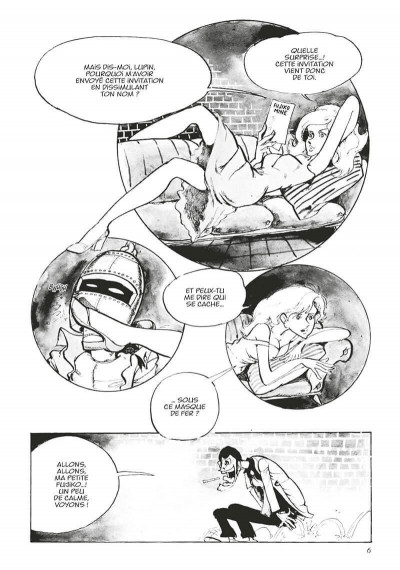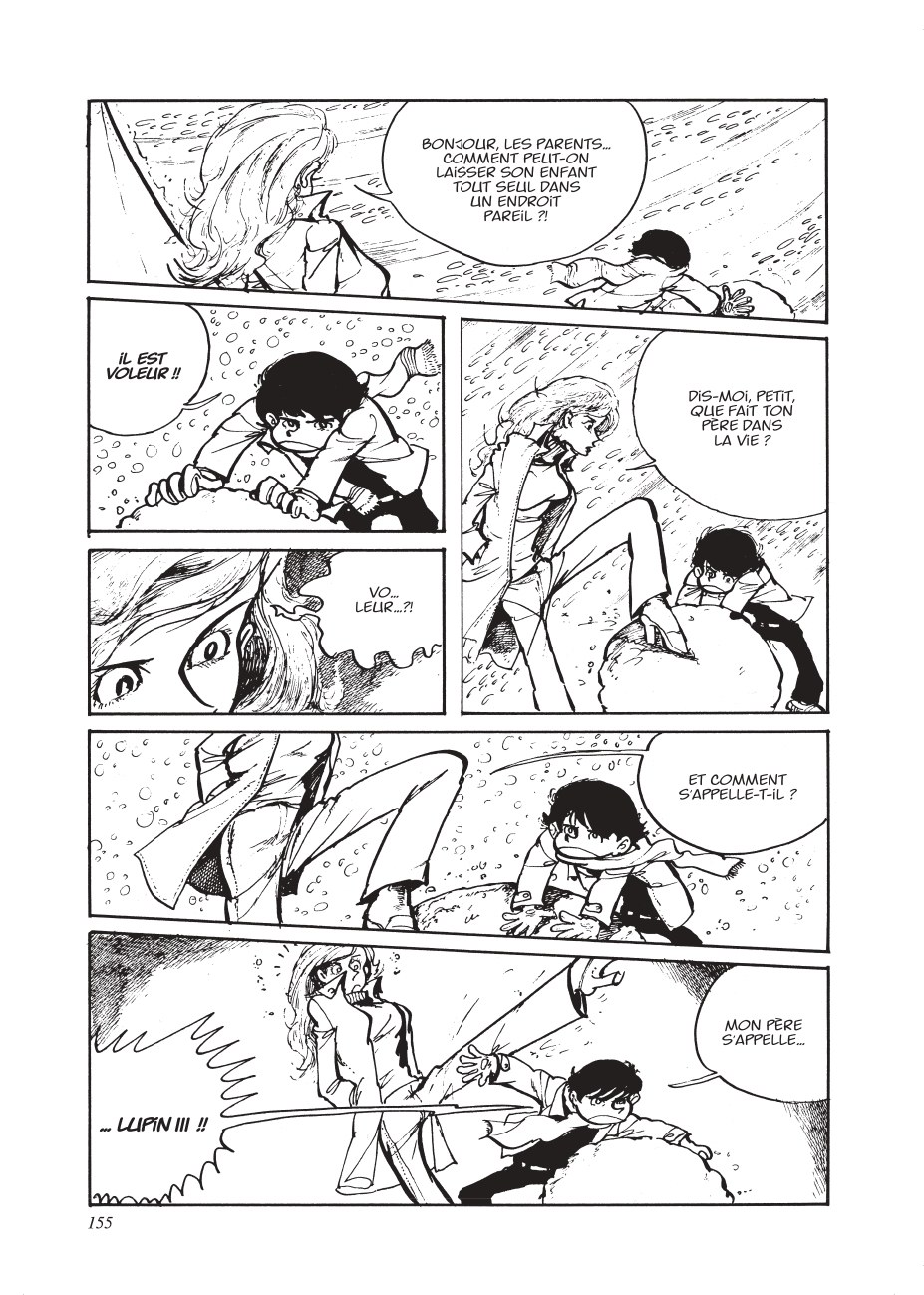From Japan to France, the Lupin III series had an astonishing editorial fate. Cult work in Japan, it has declined since the mid-60s in manga (14 volumes for the original series of Monkey Punch, several dozen others under the pen of different authors), TV movies, series and feature films, the last of which was released in 2019. In France, she faces an unexpected problem. Not having the agreement of the heirs of Maurice Leblanc, the work must be renamed. The hero is successively named Vidocq, Edgar, Rupan, Wolf. Before returning to his original surname in the 1990s when the name fell into the public domain. Enough to cause some confusion among the public. He will discover this saga through the small and big screen: an animated series broadcast from 1985, a feature film, The Castle of Cagliostro directed by the great Hayao Miyazaki and available at the time only on video cassette. But the paper version remains confidential. However, with the recent release of the latest feature film and the production of a new series, Kana Editions has decided to fill this editorial void with the publication of Lupin The Third Anthology. In the form of an elegant collection of almost 300 pages, readers will be able to discover a dozen original stories of about thirty pages each. Unrelated, these short stories propose to navigate within a rich universe.
Lupin The Third Anthology : at the heart of the 60'-70'
Readers should be warned. It is the reissue of the original plates and not contemporary stories. This may come as a surprise at the beginning of the reading because the stories are deliciously vintage. This is reflected in the influences. It is obvious that Monkey Punch was marked by the cinema of its time, Hollywood to begin with. According to the stories, you will find with delight the winks supported to the saga of James Bond (The Lupine Who Loved Me), the cinema of Sergio Léone, the film Le Mans avec Steve McQueen or the pink panther with Peter Sellers. Japanese cinema is not to be outdone with borrowings from chambara or by the integration of a dose of eroticism.  The context of creation of the work also affects the themes addressed. Two are particularly noticeable: the place of women and the sexual revolution. Through Fujiko's character, Monkey Punch builds a strong, feminine woman, equal in many ways to Lupin. Love interest, rival and partner, he is a surprisingly modern figure. Through her and many others, the author also distills a severe criticism of society: violence against women, harassment. The sexual revolution also permeates several stories. Under the pen of the mangaka, the female and male bodies reveal themselves in a whirlwind of sensuality.
The context of creation of the work also affects the themes addressed. Two are particularly noticeable: the place of women and the sexual revolution. Through Fujiko's character, Monkey Punch builds a strong, feminine woman, equal in many ways to Lupin. Love interest, rival and partner, he is a surprisingly modern figure. Through her and many others, the author also distills a severe criticism of society: violence against women, harassment. The sexual revolution also permeates several stories. Under the pen of the mangaka, the female and male bodies reveal themselves in a whirlwind of sensuality.
Lupin: between laughter and seriousness
One of the nice surprises of this anthology lies in the discovery of the various tones of the stories written by Monkey Punch. Indeed, as in the animated series, humor dominates through Inspector Zénigata, Lupin's abracadabrant plans (see the 1st story) or bickering between the members of his team. Many stories function either as short tales (Lupin's lullaby) or as quasi-visual adventures (thefabulous treasure). The whole culminates in the story Fight to the death Fujiko and a little Lupin. The reader discovers a hilarious face-to-face against a backdrop of repressed motherhood and daring sexual allusions.  Yet alongside this lightness, the stories grouped together do not hesitate to represent, to strongly suggest the violence of which women are victims. Lupin III offers strong speeches against the tide of his time. Its author also likes to stage devouring passions, death (Western Jingen). Or even really disturbing and awkward opponents (The Magician). Innovative breaks in tone that will influence many other works (City Hunter for example).
Yet alongside this lightness, the stories grouped together do not hesitate to represent, to strongly suggest the violence of which women are victims. Lupin III offers strong speeches against the tide of his time. Its author also likes to stage devouring passions, death (Western Jingen). Or even really disturbing and awkward opponents (The Magician). Innovative breaks in tone that will influence many other works (City Hunter for example).
Lupin The Third Anthology: a unique style at the service of a controlled narrative
The style of Monkey Punch is recognizable among all. Far from the clear line dear to Hergé in particular, he relies on a triptych associating lines flirting with sketching, coloring pages close to watercolor and a cutting alternating simplicity and complexity. The goal is to give a rhythm, a dynamic to each story while associating the graphic atmosphere with the theme addressed. Thus, the reader will move from story to drawing close to the comic strip where the dialogues are minimal (The fabulous treasure) to much more worked atmospheres (Lupin enters the scene) close to the atmosphere of Agatha Christie's novels.  Each short story finally surprises us with the narrative virtuosity of Monkey Punch. He demonstrates his art of getting straight to the point without sacrificing his characters and creativity. We are even surprised at the number of ideas that have subsequently inspired many works. The burglar who lets himself be locked up, the false wall, multiple identities; or the heroine sliding from the wall where she is hung while losing her clothes. A very long posterity that makes it even more necessary to read this work. It is undeniably a very good idea that Kana editions had by offering the French public to discover the original work of Monkey Punch. We can only salute the intelligence that accompanied the choice of the works represented here. One can only admire the material quality of this anthology. Let's hope that this initiative meets its audience to allow Kana to continue the publication of a cult saga.
Each short story finally surprises us with the narrative virtuosity of Monkey Punch. He demonstrates his art of getting straight to the point without sacrificing his characters and creativity. We are even surprised at the number of ideas that have subsequently inspired many works. The burglar who lets himself be locked up, the false wall, multiple identities; or the heroine sliding from the wall where she is hung while losing her clothes. A very long posterity that makes it even more necessary to read this work. It is undeniably a very good idea that Kana editions had by offering the French public to discover the original work of Monkey Punch. We can only salute the intelligence that accompanied the choice of the works represented here. One can only admire the material quality of this anthology. Let's hope that this initiative meets its audience to allow Kana to continue the publication of a cult saga.



















